Meet our team: UAB
Carolina Gimbert is an associate professor at the Chemistry Department of the Universitat Autònoma de Barcelona (UAB). Gimbert leads the SOREC2 work package 3. For the first chapter of the “Meet our team” series, we interviewed her to discover the role, goals and work of the two UAB research groups involved in the project.

First of all Carolina, could you briefly introduce the UAB research team involved in SOREC2?
The UAB team in SOREC2 project joins the expertise of two research groups of the Chemistry Department of this university. The CatSyNanoMat group develops homogeneous and heterogeneous (photo)catalytic systems based on small molecules or organic-inorganic materials. The SelOxCat group focuses its research on molecular or colloidal systems applied to redox catalysis. Both groups work synergistically to prepare a catalytic layer for the oxygen evolution reaction, included in the anodic compartment of the SOREC2 photoelectrochemical cell.

Which is the UAB research teams specific role and contribution to the project?
UAB leads WP3 dealing with the catalytic reactions that transform carbon dioxide into added value products and the water oxidation reaction to generate oxygen as a clean side-product. WP3 receives contributions from four different partners within the consortium: ICFO, CALTECH, UNIFE and UAB. The specific role of the UAB team includes the development of a thin film layer based on modified silica or titania materials, that is active towards the oxygen evolution reaction. We are exploring three different strategies based on molecular approaches that are compatible with the light absorbing n-type semiconductor material developed at ICFO and UNIFE.
What are the most important challenges UAB team is facing in this project?
There are three big challenges that we are facing toward the preparation of the catalytic layer for the oxygen evolution reaction (OER). It must be transparent and conductive, to allow the light reaching the semiconductor underlayer and the charges to be transferred throughout the material. This is in principle feasible for an intrinsic thin film layer made of silica or titania in the sub-nanometer scale, but it limits the OER catalytic performance of such materials due to the low loading of available catalytic centers. Thus, we must find a compromise between transparency, conductivity, and catalytic performance. Finally, the third challenge is to use non-critical raw materials, which excludes ruthenium and iridium oxides, two of the best OER catalysts. Consequently, we have designed materials based on more readily available metals such as cobalt, nickel and copper at low concentrations.

Both research groups at UAB have a broad experience in catalysis. They have developed catalytic systems active in relevant redox reactions including the water oxidation reaction and the hydrogen evolution reaction, both key in SOREC2 photoelectrochemical cell.
Carolina Gimbert, UAB
What are the main achievements so far?
Our first achievements include the preparation of a modified silica based thin film layer containing cobalt catalytic centers that is active and stable under OER electrocatalysis. We are now in the process of transferring such layer on top of the semiconductor photoanode to enhance its photo(activity) and (photo)stability in electrolytic conditions compatible with the carbon dioxide reduction cathodic reaction. We have also prepared two different silylated molecular precursors that should allow us to prepare alternative thin film layers based on nickel and copper.
What added value and experience can the UAB team bring to the initiative?
Both research groups at UAB have a broad experience in catalysis. They have developed catalytic systems active in relevant redox reactions including the water oxidation reaction and the hydrogen evolution reaction, both key in SOREC2 photoelectrochemical cell. The former is the targeted reaction of the anodic compartment while the latter is a competitive process in the cathode. The CatSyNanoMat group ’s interests and recent works focus on photocatalysis, bridging expertise with other partners such as ICFO, UNIFE or CALTECH. The molecular background and approaches of both the CatSyNanoMat and SelOxCat research groups brings unique opportunities in the design of catalytic materials often overlooked by other disciplines working in similar projects.

Why do you think it is important for your research team to take part in this project?
To be part of an international consortium such as that involved in the SOREC2 project allows us to interact with other researchers working in complementary fields and to tackle scientific problems that could not be solved only with our own contributions. Our research groups expect to nourish from well-consolidated and internationally renowned groups in different fields such as photonics and carbon dioxide reduction catalysis.
Another important aspect of the SOREC2 project is the involvement of industry partners, a valuable opportunity for us to fill the gap between academic research, in which we are involved every day, and research towards commercialization. We expect to enhance our innovation capacity by learning from these industrial partners and stakeholders.
What is the most interesting part of the work you are doing in the project? Why?
The opportunity to coordinate the work of five different research groups towards the same goal. This is of course challenging because each team has its own way of proceeding and requires additional effort by everyone to perform out of their comport zone. From my point of view, this collaborative and demanding environment leads to new and more innovative ideas. In this context, I would also like to highlight the supervision of PhD students and postdoctoral fellows within such an international and multidisciplinary research project. I enjoy contributing to their development as scientists and particularly, seeing how they evolve and come out with solutions to scientific problems towards achieving our final targets.





